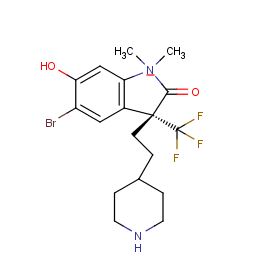SeenSoFar
Bluelighter
- Joined
- Jun 21, 2013
- Messages
- 241

So, it's long been known, or at least rumoured, that efavirenz, an anti-retroviral drug used to treat HIV infections, is abused in South Africa for it's supposedly hallucinogenic effects. The cause of these effects has been speculated upon, but until today I had never heard of any actual research on the subject. However, today I read a paper[1] that said efavirenz has been shown to be active at the 5-HT2A receptor, among other targets of interest, and that it induces the characteristic head-twitch response that identifies psychedelic effects in rodents, as well as substituting for LSD in lever-pull discrimination tests in trained rodents.
It seems to me that efavirenz should be used as a starting point for the development of new psychedelic compounds, since anything that came out of it would be totally dissimilar to current controlled compounds. The real question would be whether the anti-retroviral activity, and the host of negative effects that can occur with the use of efavirenz could be separated from the psychedelic effects.
Thoughts?
[1] - Neuropsychopharmacology (24 May 2013) | The HIV Antiretroviral Drug Efavirenz has LSD-Like Properties - http://dx.doi.org/10.1038/npp.2013.135


